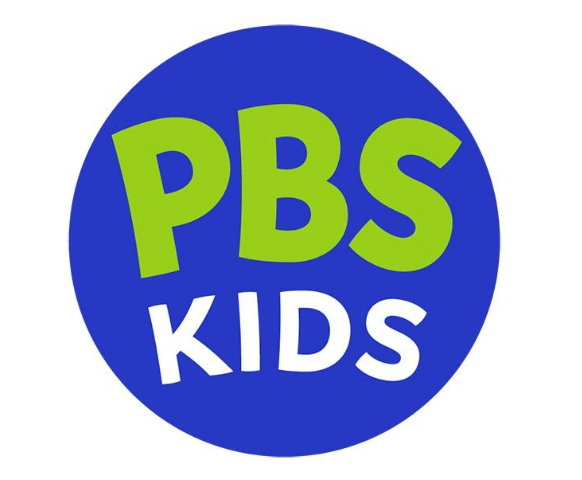Remember when the Internet promised not only to change the way consumers shopped, but the way they paid for purchases as well? Move over, Confederate dollar, there are new worthless currencies in town.
Flooz.com and Beenz.com, both New York City, offered not only the convenience and selection of shopping online, but also an alternative to using credit cards. The sites also provided a simple model that rewarded consumers with proprietary currency for viewing ads and promotional messages or visiting partner sites. The currency could then be redeemed for gift certificates or products from participating merchants.
Flooz.com launched in 1999 with 30 partnering merchants including such traditional retailers as Barnes & Noble, J. Crew, Tower Records, and Toys “R” Us. The company made a media splash with an $8 million launch campaign starring Whoopi Goldberg. But the operation ended abruptly in early August, when visitors to Flooz.com were greeted with a message stating, “We are currently unable to process your transaction…. Check back for further updates.”
The further updates ultimately entailed a complete shutdown of operations and bankruptcy proceedings. (Flooz.com officials did not return calls.) That left merchant partners holding the bag. “We don’t really have a comment other than that we’re not using Flooz any more and I doubt we’ll be seeking out any other types of relationships like this,” says barnesandnoble.com spokesperson Caroline Brown.
Just days later, Beenz.com users were greeted with a message announcing that the company would terminate operations on Aug. 26. Beenz.com launched in 1998.
What went wrong? The general crash of the Internet economy certainly played a role. However, Beenz.com and Flooz.com also seem guilty of overestimating just how deeply and quickly the Internet is changing consumer shopping habits — and therefore how much critical mass their networks could generate.
They weren’t alone out there. Mountain View, CA-based RocketCash is now one of the last dedicated “currency” businesses still in operation, and has on ocassion offered to “exchange” rival currency for members willing to convert. Numerous online companies have reward systems that let consumers earn currency or prizes, including SoftCoin, MyPoints, and MilePoint. Although there are no guarantees, the remaining crop still looks healthy.
“We were approached by Beenz.com, but we decided to go with MyPoints because they had the scale we were looking for,” says Shea Dixon, senior marketing manager for Sprint, Overland Park, KS.
Flooz.com and Beenz.com also entailed too much work for consumers because it took a long time to accumulate significant rewards. “Flooz.com made a pitch to us,” says Marty Ordman, vp-marketing services at Dole Food Co., Westlake Village, CA. “But the points that would have been awarded to our typical customer were worth about $1.79. With our purchase cycle, most of our customers wouldn’t collect too much.” Dole instead chose to work with SoftCoin.
“To get a meaningful amount of Flooz was a long road,” agrees Mark Lacek, ceo of Minneapolis-based and erstwhile Flooz partner MilePoint, which lets consumers turn frequent-flier miles into online discounts with partners including The Sharper Image, Hammacher Schlemmer, and Orvis. “It just wasn’t [realistic to think that] consumers would spend so much time with those same merchants. Let’s face it: Only two to three percent of purchases are made online.”
“Establishment of another currency is very difficult,” adds Lacek. “There were so many out there, people were confused and wondering if they had any long-term value. Our own position isn’t to create a new currency, but to give consumers another way to use existing currencies.” MilePoint has more than 200,000 consumers as members.
“Flooz.com and Beenz.com were using promotion as a Trojan Horse to build their own consumer base,” says Juan Carlos Velten, co-founder and senior vp-marketing of San Francisco-based SoftCoin, which develops online promotional programs. “They took co-ownership of consumers along with the brands. With our model, our marketing partners are always upfront.”
Notes from the Survivors
Brand-driven promotions have cemented SoftCoin’s partnerships. The company helped Purchase, NY-based PepsiCo develop a cross-divisional Summer of Cash campaign for Frito-Lay snacks and Tropicana juices that dangled $250 million in online credits on packaging for Doritos, Ruffles, Lay’s, Tostitos, and Tropicana Twister. Consumers entered on-pack codes at softcoin.com to see how much they’d won, and were able to redeem their credits at five participating retailers including ftd.com and sunglasshut.com. The effort gave Pepsi a database of 2.5 million customers.
Dole tapped SoftCoin for a year-long campaign that broke in May and features codes in more than 20 million packages of Dole Fruit Bowls. Consumers use the codes to enter a special area at dole.com and receive $10 off purchases at seven retailers including sunglasshut.com, kbkids.com, and cooking.com. A new crop of retailers will be added in January to keep things fresh. Flair Communications, Chicago, handles.
“We wanted a loyalty program that was hassle-free,” says Ordman. “Our customer demographics are primarily active women. They’re not the type to sit down, clip a coupon, and mail it in.”
Three-year-old RocketCash targets teens with a debit-card system accepted at more than 100 Internet merchants. The company earns a percentage of sales along with fees for running direct marketing programs to its two million members. “Because the RocketCash technology does not require merchants to modify their Web sites to become part of the RocketCash mall, we’ve always had top-tier merchants,” says co-founder and vp-marketing Carol Kruse.
RocketCash supplements the main operation with a promotional services unit that develops Web sites and branded reward programs for clients such as Coca-Cola Co.’s Sprite, Foster Farm’s Corn Dog, and Uncle Ben’s.
San Francisco-based MyPoints.com, which posts branded offers on its home page but also hosts programs on client sites, didn’t escape the Internet crunch completely: Although its membership ranks have risen to 16 million since its 1998 launch, its revenues dropped 37 percent to $10 million in the first quarter of 2001. But MyPoints got the financial shot Flooz and Beenz couldn’t this spring when Chicago-based United Airlines’ New Ventures division acquired it for $112.5 million. (While MyPoints.com continues to function as a separate company, its members are now able to redeem points for travel packages with United and get promotional offers directly from the airline.) The deal “underscores the validity of our model,” says MyPoints vp-media Knox Lundgren. “We don’t have to beat the door down with our balance sheet anymore.”
All in the Family
Today, brands might be better off developing programs in-house. “Online coalition marketing is in a grave state,” says Rick Barlow, ceo of Frequency Marketing Inc., Cincinnati. “Right now, there are no strong programs; everyone is in trouble.”
But brands looking to forge their own programs “need to commit enough staff and resources to run it. It takes a five or 10-year commitment to sustain and aggressively expand such a program,” says Barlow.
Still, Barlow isn’t sounding the death knell for third-party offers. “You’ll see more coalition programs breaking in the next six to 12 months. All it takes is one to succeed. If you have an important enough relationship with your consumers and the purchase frequency to make it worth it, coalitions do make sense.”
Although it worked with SoftCoin on the summer effort, Frito-Lay flies solo with ePloids.com, which launched in July 2000 to move the company’s on-pack continuity program, Ploids, online. Trumpeted on 3.2 billion packages since inception, ePloids recently introduced a four-level referral component. At the bottom, a registered user who refers five friends can receive 1,000 digital ploids and entry into a “smoids” auction room. At the top, a user who refers 20 friends gets access to an “x-oids” room and 10,000 digital ploids. Each new visitor automatically receives 500 ploids, whether they’ve signed up for the referral program or not.
This month, sister Pepsi-Cola, Purchase, NY, launches the third flight of its online continuity campaign, PepsiStuff.com, the online incarnation of the company’s six-year-old PepsiStuff program and an effort that has become the model for online success. The company will again use partner Yahoo, Santa Clara, CA, to manage the program.
From October through January, caps on bottles of all SKUs of Pepsi, Mountain Dew, Mug Root Beer, and Orange Slice carry codes; consumers go online to learn each code’s point value, then accrue points to redeem for premiums. This year, caps also carry codes for 500,000 instant-win prizes from 15 merchant partners in music, movies, videogames, sports, multimedia, and retail.
“Last year, we were talking to a lot of teens and tweens, but we found we were also talking to adults,” says Pepsi marketing manager Vicki Nellen. “We needed to make sure we had content for everyone.”
“Brand-based models like PepsiStuff.com and ePloids have established an intimacy with consumers through daily interaction,” says Nellen. “Models like Flooz and Beenz just didn’t have that familiarity.”
Familiarity can hold a lot of currency with consumers.



